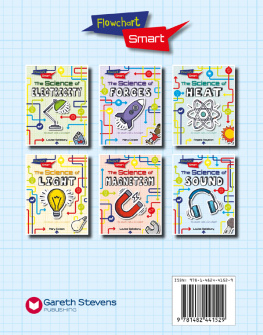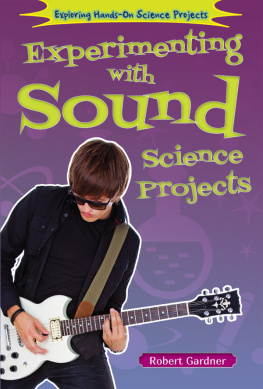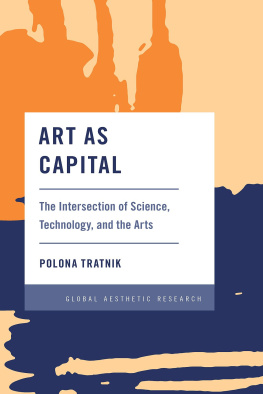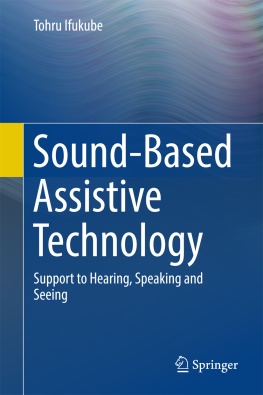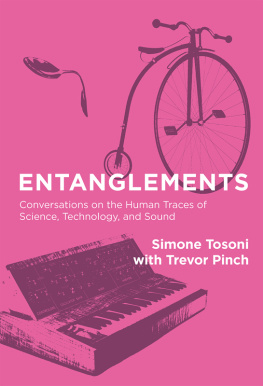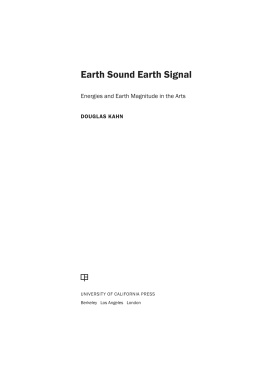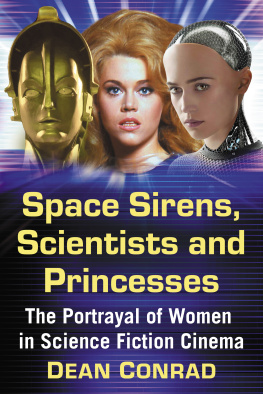Gascia Ouzounian - Stereophonica: Sound and Space in Science, Technology, and the Arts
Here you can read online Gascia Ouzounian - Stereophonica: Sound and Space in Science, Technology, and the Arts full text of the book (entire story) in english for free. Download pdf and epub, get meaning, cover and reviews about this ebook. year: 2021, publisher: MIT Press, genre: Romance novel. Description of the work, (preface) as well as reviews are available. Best literature library LitArk.com created for fans of good reading and offers a wide selection of genres:
Romance novel
Science fiction
Adventure
Detective
Science
History
Home and family
Prose
Art
Politics
Computer
Non-fiction
Religion
Business
Children
Humor
Choose a favorite category and find really read worthwhile books. Enjoy immersion in the world of imagination, feel the emotions of the characters or learn something new for yourself, make an fascinating discovery.

- Book:Stereophonica: Sound and Space in Science, Technology, and the Arts
- Author:
- Publisher:MIT Press
- Genre:
- Year:2021
- Rating:5 / 5
- Favourites:Add to favourites
- Your mark:
- 100
- 1
- 2
- 3
- 4
- 5
Stereophonica: Sound and Space in Science, Technology, and the Arts: summary, description and annotation
We offer to read an annotation, description, summary or preface (depends on what the author of the book "Stereophonica: Sound and Space in Science, Technology, and the Arts" wrote himself). If you haven't found the necessary information about the book — write in the comments, we will try to find it.
Stereophonica: Sound and Space in Science, Technology, and the Arts — read online for free the complete book (whole text) full work
Below is the text of the book, divided by pages. System saving the place of the last page read, allows you to conveniently read the book "Stereophonica: Sound and Space in Science, Technology, and the Arts" online for free, without having to search again every time where you left off. Put a bookmark, and you can go to the page where you finished reading at any time.
Font size:
Interval:
Bookmark:
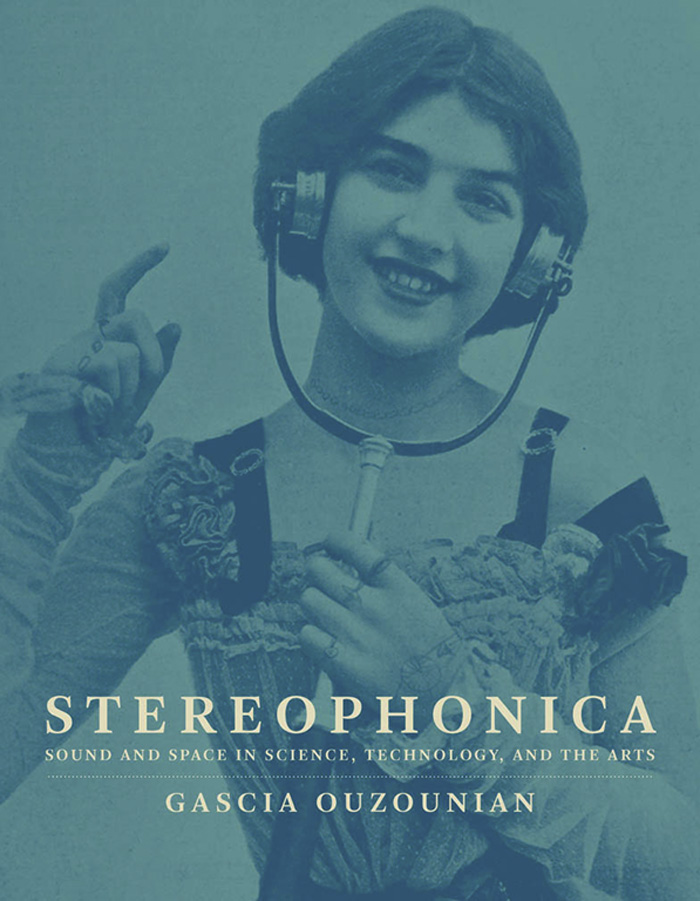
Gascia Ouzounian
The MIT Press
Cambridge, Massachusetts
London, England
2020 Massachusetts Institute of Technology
All rights reserved. No part of this book may be reproduced in any form by any electronic or mechanical means (including photocopying, recording, or information storage and retrieval) without permission in writing from the publisher.
This book was set in ITC Stone Serif Std and ITC Stone Sans Std by New Best-set Typesetters Ltd.
Library of Congress Cataloging-in-Publication Data
Names: Ouzounian, Gascia, author.
Title: Stereophonica : sound and space in science, technology, and the arts / Gascia Ouzounian.
Description: Cambridge, Massachusetts : The MIT Press, 2020. | Includes bibliographical references and index.
Identifiers: LCCN 2020003270 | ISBN 9780262044783 (hardcover)
Subjects: LCSH: SoundHistory. | SoundsHistory. | Acoustical engineeringHistory. | MusicHistory and criticism. | Sound in artHistory.
Classification: LCC QC220 .O99 2020 | DDC 534.09dc23
LC record available at https://lccn.loc.gov/2020003270
10 9 8 7 6 5 4 3 2 1
d_r0
To Denise Lupien, who helped me imagine a life in music and sound; and to Gerard Gormley, for sharing that life with me.
All sounds (whatsoever) move round, that is to Say, On all sides, Upwards, Downwards, Forewards and Backwards: This appeareth in all Instances.
Francis Bacon, Sylva Sylvarum (1627)
Music will eventually engulf and surround you.
Edgard Varse (1936)
This project has been supported by many people over many years. Im indebted to Doug Sery at the MIT Press for being a supportive and generous editor; Noah J. Springer for his advice throughout the publication process; Kathleen A. Caruso for her careful editorial work and guidance; Julia Collins for her meticulous copyediting; and Emily Gutheinz and Sean Reilly for their wonderful work on the design and art package.
Librarians and staff at a number of archives provided crucial support with research. My thanks go to Sheldon H. Hochheiser and Melissa Wasson at the AT&T Archives and History Center; Ted Houghtaling and Leah Loscutoff at the Samuel C. Williams Library at the Stevens Institute of Technology; Barry Truax of the World Soundscape Project; Tori Owen and Eleanor James at Arcana Editions; Cate Watson at The Science Museum Library & Archives at Wroughton; Natasha Swainston at the Churchill Archives Centre at Cambridge University; Andrew Hennan at the Banff Centre for Arts and Creativity; and staff at the libraries of McGill University, University of California San Diego, Stanford University, and the University of Oxford.
The Faculty of Music at the University of Oxford and Lady Margaret Hall supported this work through a period of research leave, and my colleagues and students brought much joy to the work. Im grateful in particular to Georgina Born for her generous advice and collaborative spirit; Joe Davies for his kindness, friendship, and unparalleled support of our community; Sanja Bogojevic and Christina Goldschmidt for their willingness to read the manuscript, even though one is a lawyer and the other a mathematician; Alan Rusbridger, Lindsay Mackie, Jo Murray, and Helen Barr for creating a warm and vibrant college atmosphere; Susan Wollenberg for her inspiring presence; and my colleagues in the Faculty of Music for fostering a genuinely stimulating research culture.
Artists, composers, and curators generously shared their work, ideas, and time. It is a pleasure to thank Amanda Abi Khalil, Sam Auinger, Joan Baz, Steve Chance, Heidi Fast, Anna Friz, Nathalie Harb, Vijay Iyer, Christina Kubisch, Una Lee, Signe Lden, kara lynch, Omaya Malaeb, Matilde Meireles, Nadim Mishlawi, Joe Namy, Mendi+Keith Obadike, Marianthi Papalexandri-Alexandri, Jen Reimer, Merijn Royaards, Youmna Saba, Mhamad Safa, Carsten Seiffarth, Carsten Stabenow, Markus Steffens, Max Stein, Julian Stein, and Cynthia Zaven.
Many others have supported this work through their encouragement and interest. I warmly acknowledge the support of Carolyn Birdsall, Zeynep Bulut, Eric Clarke, Seth Cluett, Marcel Cobussen, Charles Curtis, Peter Cusack, Paul DeMarinis, R. Luke DuBois, Ellen Flgge, Michael Gandy, Patrick Grealey, David Gutnik, Elizabeth Hoffman, Adriene Jenik, Douglas Kahn, Ben Knapp, Melle Kromhout, Anahid Kassabian, Fanny Louvier, Eric Lyon, Emily MacGregor, Lev Manovich, James Mansell, Miya Masaoka, Conor McCafferty, Andra McCartney, Mara Mills, Melissa Morton, na Monaghan, Rachel OGrady, Jonathan Packham, Colin Ripley, Jan Smaczny, Jason Stanyek, Paul Stapleton, Jonathan Sterne, Christabel Stirling, Atau Tanaka, Spencer Topel, Justinien Tribillon, David Trippett, Eric de Visscher, Salom Voegelin, and Ellen Waterman.
Im indebted to Joe Davies, Christopher Haworth, and Guy Veale for their valuable feedback on the manuscript; Melissa van Drie for her careful reading, generosity, and many insights; Sarah Lappin and John Bingham-Hall for being brilliant collaborators; Sumanth Gopinath for support at an early stage; Eric Lewis and Piers Hellawell for support at a late one; and Richard Sennett for the warm welcome to Theatrum Mundi.
George Lewis was a formidable PhD supervisor who diligently advised students like myself while seemingly reforming an entire discipline. His work fuels mine in every respect. Jann Pasler inspired many of us in the Critical Studies & Experimental Practices program at the University of California San Diego. Im grateful to them for creating an environment in which experimental work could thrive, and for continuing to do such transformative, rigorous work.
Im thankful for the many friends who supported this project, in particular the Allen family, Drew Boles, Fernanda Carniero and Alexandre Lopes Rocha Lima, Maa Cybelle Carpenter, Michael J. Daly and Conan McIvor, Emily DeDakis, Eve Egoyan and David Rokeby, Elinor Frey and Maxime McKinley, Chlo Griffin, the Griffins, the Hellawells, the Hickeys, Kelly Hennigan, KP Holland, Rich Tayloe and Doug Cordes, and Lauren Wooley. Eve, Elinor, Chlo, Im so grateful for our collaborations and your presence in my life.
My family has been wonderfully supportive throughout. My sisters, Maral and Karen, inspire me with their dedication to their craft and the time they give to others; their husbands bring laughter to our lives, as do our nephews; my mother uplifts us with her boundless energy and zest for life; my grandmother brightens our lives daily; and my father did the hard work of reading chapters but also celebrating good times in various corners of the world. Im deeply indebted to them, and to my new family, the Gormleys, for their support.
The book is dedicated to Denise Lupien, an extraordinary violinist and educator. I was enormously fortunate to study with her at McGill University, where she was a professor of violin while also serving as concertmaster of the Orchestre Mtropolitain and as first violinist of Quatuor Morency. She and her partner, the wonderful luthier Denis Cormier, gave freely of their time and built a community around art, music, philosophy, and friendship. They inspire me still.
The book is also dedicated to Ger, for his kindness, intelligence, warmth, musicality, humor, patience, and love.
1.1 Copper engraving by Franois-Louis Couch depicting the explosion of the gunpowder factory at Grenelle on August 31, 1794
1.2 Illustration of the Invisible Girl
Next pageFont size:
Interval:
Bookmark:
Similar books «Stereophonica: Sound and Space in Science, Technology, and the Arts»
Look at similar books to Stereophonica: Sound and Space in Science, Technology, and the Arts. We have selected literature similar in name and meaning in the hope of providing readers with more options to find new, interesting, not yet read works.
Discussion, reviews of the book Stereophonica: Sound and Space in Science, Technology, and the Arts and just readers' own opinions. Leave your comments, write what you think about the work, its meaning or the main characters. Specify what exactly you liked and what you didn't like, and why you think so.

